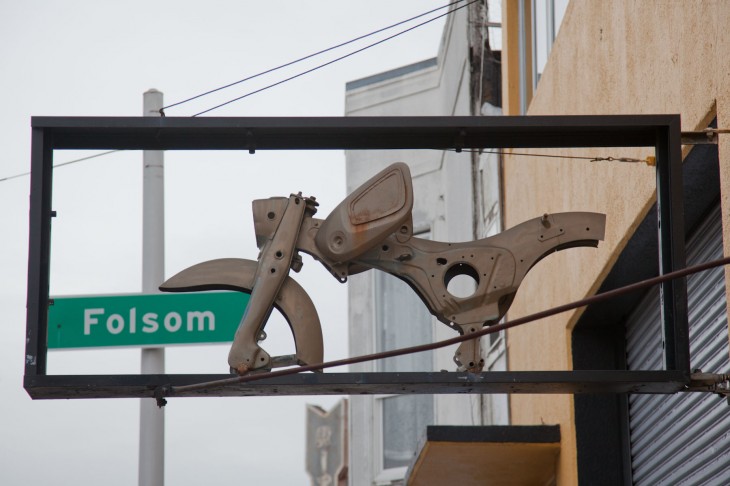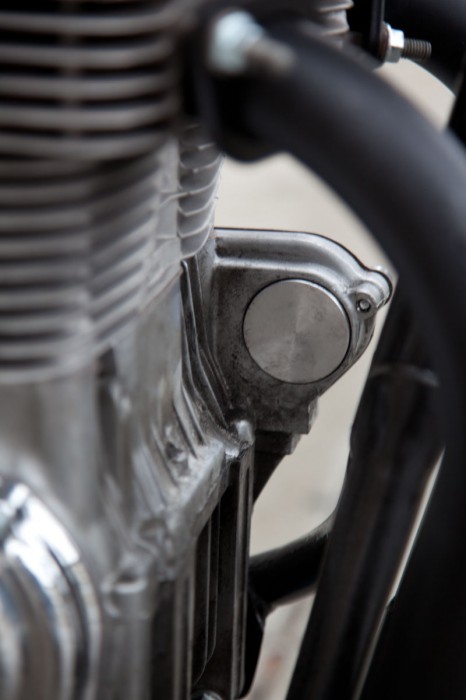
Leave it stock, says Charlie, but that doesn't mean there aren't performance benefits to be had from running a carefully assembled and well-tuned stock motor.

Leave it stock, says Charlie, but that doesn't mean there aren't performance benefits to be had from running a carefully assembled and well-tuned stock motor.
Howdy! Remember me? It’s been about six months since the last update on my CB350 Cafe-Racer project, but a lot has happened since then. There’s a new baby in the house, which slowed things a little (more), but I am pleased to announce that in addition to having a complex, messy project that consumes all my money, spare time and sanity, I also have a new motorcycle in the garage, my completed 1970 (ish) Honda CB350 cafe racer.
So where are the lavish, porn-quality photos of my new ride that I’ve been teasing you about for the last two years? Patience, my friends. We have unfinished business to discuss, so before you set your comment-phasers on “kill,” to pick apart the aesthetic choices I’ve made, you’ll have to endure a few more installments where I talk about the motor, suspension, brakes, electronics, final assembly, and then, at last, some riding impressions.

There's no sign for Charlie's place, just this old Dream frame hanging over the roll-up door.
The raison d’etre for cafe racer modifications is to make a motorcycle go, stop and turn better, and we’re all most impressed by the ‘go’ part. At the start of the project, I contacted vintage Honda racer Buff Harsh, with the idea that building a fire-snorting race motor wouldn’t be that much more complex than a milder street motor. Not true, it turns out. People claim to have the ‘formula’ for the fastest motor, but it’s never that easy. Not only are the development, blueprinting and hunting down of rare high-performance parts expensive and time consuming, but the end result (though fun) will be difficult to start, ride and maintain—as well as have a shorter lifespan. Charlie O’Hanlon, vintage Honda guru and my guiding hand for this project, advised me to go with a mild state of tune—first-oversize (but stock compression) pistons, a mildly hotter grind on the camshafts, and stock carbs. My favorite machine shop, Moto Machine in San Francisco, did the cylinder bore and freshened up the cyclinder head while Charlie sent the engine covers out for polishing.

Charlie's careful work is evident when you pull the seat off and look at his electrical work. He's proud that he uses the same colors and basic wiring layout as OEM.

This block-off plug saves weight, looks great.
Charlie’s shop is deep in the heart of San Francisco, where there is nowhere to hide from dissatisfied customers. So he focuses on reliability and rideability—after all, you want to ride and enjoy your old bike, not just look at it or show off a framed dyno chart. He convinced me a peaky motor with cantankerous flat-slide racing carbs (which are only happiest WFO) wouldn’t be much fun to ride.
The ’60s were fun, but motorcycle electrical systems from that time weren’t. That’s why Charlie was going to simplify and completely rebuild the CB’s electrical system. A rebuilt stator sends juice to a slick little regulator/rectifier Charlie has vintage parts specialist Vintage Repo manufacture for him. From there, electrons go to a featherweight lithium-iron battery from Shorai. Designed for a small scooter, the battery I selected weighs far less than a pound, a savings of 5 pounds over the big lead-acid unit the stock CB350 uses. In addition to being light, the Shorai holds a charge for up to a year, is zero-maintenance, doesn’t sulfate or produce dangerous gasses and can’t be disposed of in the regular trash. Shorai sells replacement batteries for just about any motorcycle you can think of, at prices roughly equal to what OEMs charge for replacement lead-acid batteries (but significantly more than aftermarket lead-acid batteries).
My little Shorai battery is too small to power an electric starter, but no matter—my leg works fine and the CB has a kickstarter, which combined with an off switch for the headlight, shows how much confidence even Honda’s engineers had in the barely-adequate charging system. A machined starter motor block-off plate covered up the hole where the starter used to live—another few pounds saved.
Dyna coils and ignition send electricity to the points, which will join other 20th-Century relics on the ash-heap of history as soon as they are replaced by the electronic ignition Charlie will be stocking (when he completes a little more development work).

Looks like any old front end, but it hides upgraded springs and Racetech Gold Valve Emulators for a modern ride.
Re-reading my story from July, I noticed a cryptic reference to Superplush Suspension, who rebuilt the fork assembly. Owner James Siddall has been tuning suspension for high-level pavement and off-road racers like Martin Cardenas, Jake Johnson and Dakar rider Jonah Street. He’s done some vintage stuff, and he recommended I call up Racetech and get hold of a set of Gold Valve Cartridge Emulators. These clever little devices sit on tip of your damping rods and actually get the fork to work like a cartridge unit, offering a way to get modern performance—and a much smoother ride—out of old (or just cheap) damping-rod forks. Racetech doesn’t have the emulators for the skinny CB350 fork, yet another reason (aside from the disc front brake) to upgrade to a CB400F front end.
Finally, 23 months after my project started, Charlie emailed—the motor was done, time to bring in all the parts for final assembly…